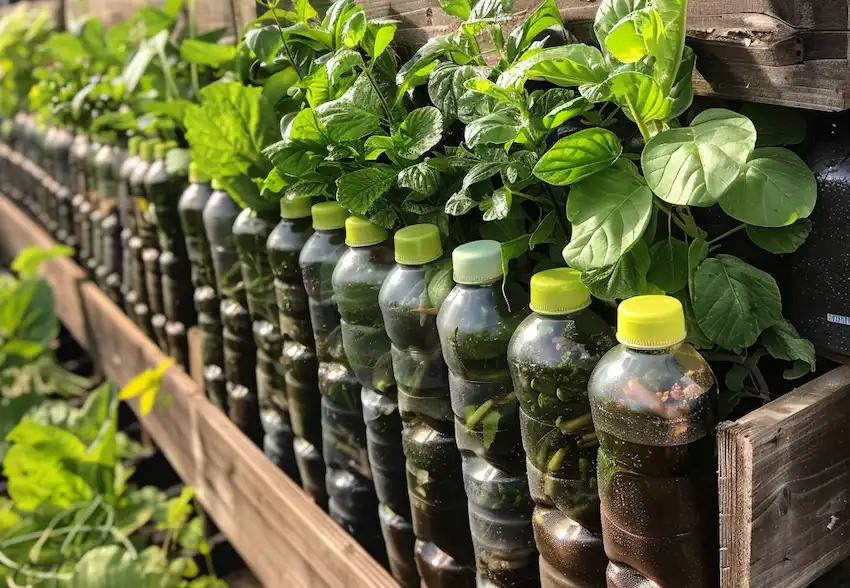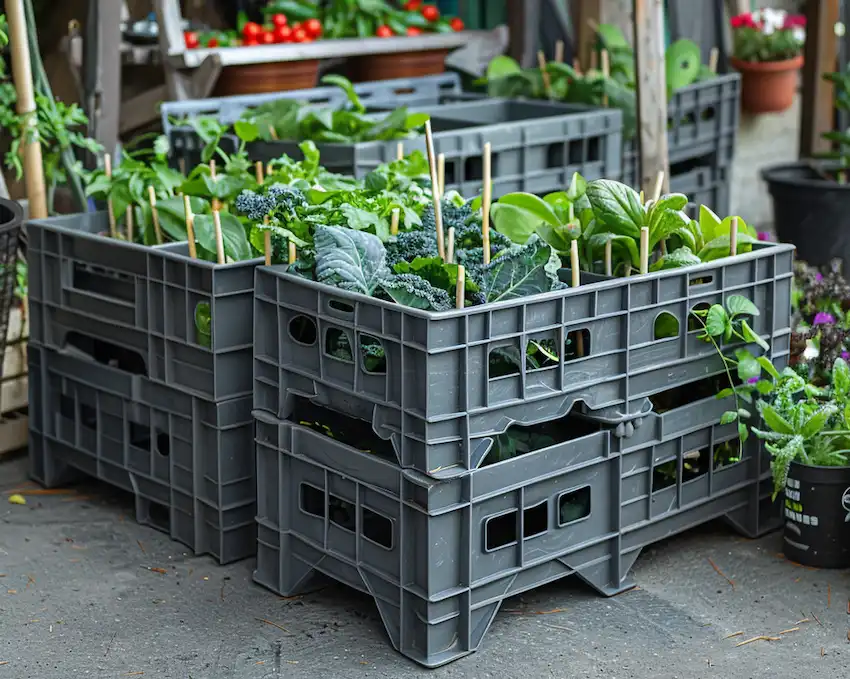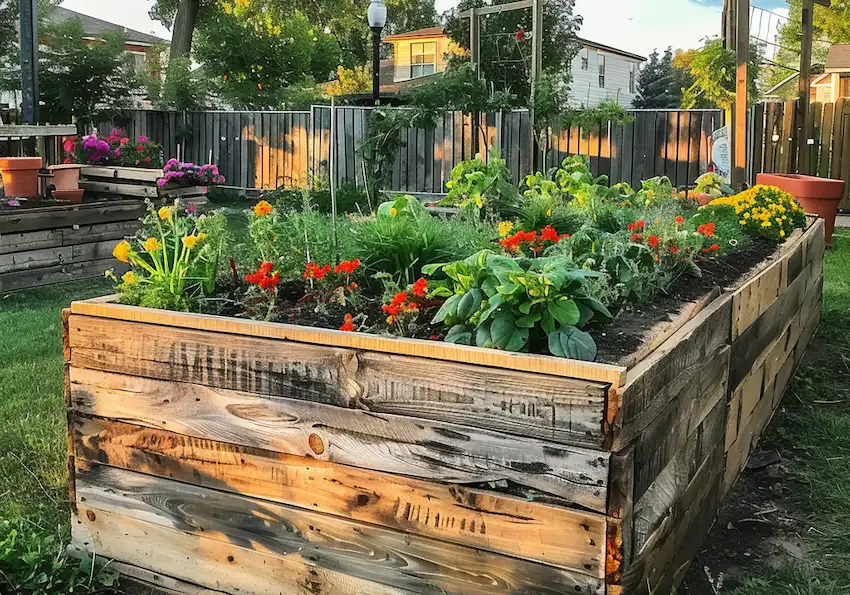Cheap and Original Ways to Fence Your Garden Beds
Creating a beautiful and productive garden doesn’t have to break the bank, especially when it comes to fencing your garden beds. Whether you’re looking to protect your plants from pests, create a visual appeal, or simply demarcate your gardening space, there are plenty of inventive and cost-effective solutions out there. Let’s explore some unique ideas that not only serve their purpose but also add a touch of creativity to your garden.
1. Upcycled 2L Plastic Bottle Fencing for Raised Beds

One of the most innovative and eco-friendly fencing ideas involves using 2L plastic bottles. Start by driving a wooden stake into the ground at each corner of your garden bed. Then, take clean, empty 2L bottles and stick them upside down, threading them between the stakes. To ensure durability and prevent the bottles from rotating, secure them with strong strings tied to all four stakes, threading the string through all the bottles both at a lower and an upper level. This method not only recycles plastic bottles but also creates a visually striking and functional barrier for your garden beds.
2. The Classic Charm of Bricks
Bricks offer a timeless look and can be arranged in various patterns to create a sturdy and attractive garden bed fence. You can often find bricks at little to no cost from construction sites or recycling centers, making this option both economical and stylish. Lay them flat or stack them for a bit of height – either way, bricks provide a durable solution that blends well with any garden aesthetic.
3. Rustic Wooden Logs
For a more rustic and naturalistic approach, consider using wooden logs as your garden bed fencing. Logs can be sourced from fallen trees or trimmings and laid out around the perimeter of your garden beds. This method not only adds a charming woodland feel to your garden but also utilizes natural materials that would otherwise go to waste.
4. Industrial Plastic Crates

Repurposing industrial plastic crates as fencing for your garden beds is not only original but also incredibly functional. These crates can be stacked and secured around your beds, providing ample protection and a modern look. The spaces between the crate slats allow for air circulation and sunlight penetration, making them an excellent choice for vegetable gardens in particular.
5. Bamboo Stakes and Twine
Bamboo is a fast-growing, sustainable resource that can be used to create a lightweight and aesthetically pleasing garden fence. Drive bamboo stakes at intervals around your garden bed and connect them with twine or string to create a simple, yet effective barrier. This method is particularly useful for climbing plants, as they can be trained to grow up the bamboo stakes.
6. Woven Willow or Hazel Hurdles
Creating hurdles out of woven willow or hazel branches can give your garden a traditional and organic look. These materials are often available for free or at a low cost from landscapers or farms that need to clear out overgrown areas. Weaving the branches together to create panels can be a fun DIY project that adds a unique and functional element to your garden.
7. Repurposed Pallet Wood
Wooden pallets are often available for free from local stores or warehouses. They can be disassembled and the wood can be used to create a charming and rustic fence around your garden beds. Sand down the wood to avoid splinters and arrange the planks vertically or horizontally to suit your taste. This method not only recycles materials but also offers a sturdy and attractive solution for your garden fencing needs.

Incorporating these cheap and original fencing ideas into your garden not only helps in protecting your plants but also adds a touch of creativity and personal flair to your outdoor space. By choosing to repurpose and upcycle materials, you’re also making an environmentally friendly choice that contributes to a sustainable future. Happy gardening!



















